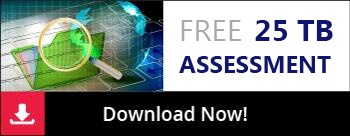
Hacking is big money for the right data. Hackers have moved on from simple email worms and now target businesses. Their goal is to collect enough data to sell it on the black market. One way they can collect massive amounts of data is to drop malware on network storage. The malware has the ability to spread like wildfire and the damage to the corporation is immense.
Increased Endpoint Risks on Corporate Security
It’s long been known that storage vectors are common ways malware enters the network. USB devices, portable drives, and personal media pose a threat to corporate security. However, a recent Ponemon study shows that endpoint risk has increased with the introduction of cloud technology and mobile devices. Employees (and hackers) have many more ways to introduce malware to network storage.
When these files are able to access just one employee device and copy to just one network storage location, it can wreak havoc on the network. It just takes one employee to run malicious software on the network before your entire environment is infected with malicious applications including keyloggers, trojans, ransomware or numerous other malware.
Even if malware remains dormant for a while, your backup devices soon become infected as you copy the malicious software over and over to backup media. The implications of this malware is evident, but it also takes critical storage space and could even leave customers at risk should they be used on any public-facing servers.
Determine If Your Network Contains Malware
You could audit thousands of user files, or you can let DefendX Software File Assessment do it for you. It can review your files and provide you with critical details that describe your storage space usage.
Malware can be stored in any area of your network storage including user workstations where it still hasn’t replicated. Some administrators force network storage for even basic local folders such as “My Documents” for Windows users. Malware creators know that this is where users store their personal files, so they target this folder either with stealing data or replicating malware to it.
With DefendX Software File Assessment, you can understand the way files use your primary storage. You can also get a snapshot of file usage for archived files. Even garbage files that aren’t relative to your business are flagged. This helps you reduce storage usage for unnecessary junk files that aren’t relevant to the business such as music or personal executables.
Malware can spread not just from local file storage but from network storage as well. DefendX Software File Assessment finds this malware and helps you keep your network storage clean from these attacks.
Want to experience File Assessment 5TB for yourself? We’ve got a free trial!
Just download and run the Storage Investigator, then follow the set-up wizard. Or read the User Manual for a more detailed walk-through.







